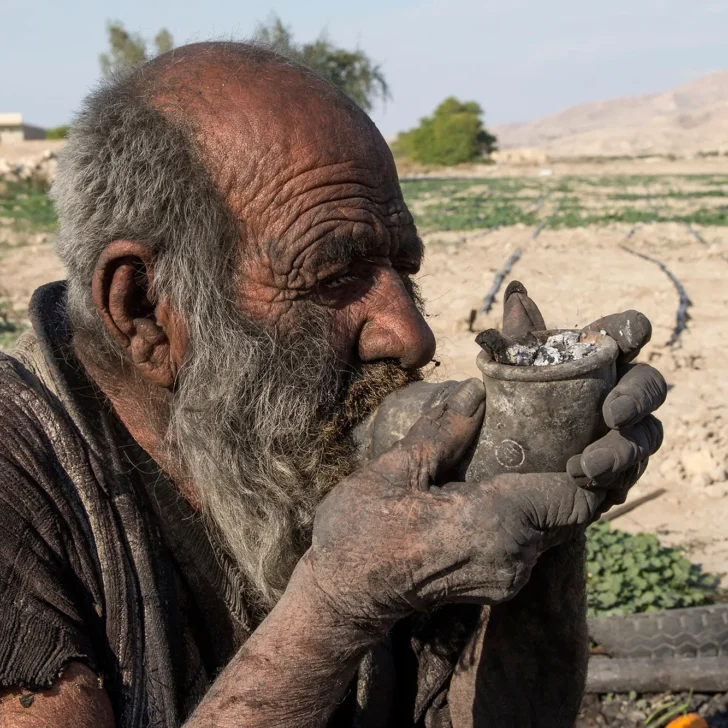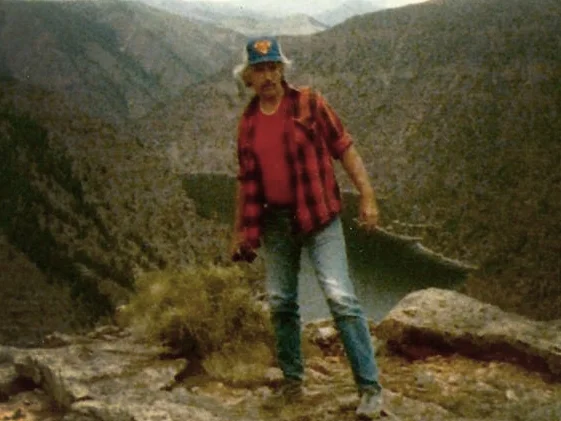Pompeii is one of the most well-known Ancient Roman cities today. That’s because it’s one of the most well-preserved examples of an Ancient Roman city.
The reason for its preservation is tragic and macabre, but what it can teach us is precious.


The City Of Pompeii
Pompeii was not an everyday Roman city. Though many of the people who lived there were permanent residents, Pompeii was a resort town at its core.
Many wealthy Roman officials had vacation homes there. Its position on the Bay of Naples meant that through the spring and summer, the weather was warm and comfortable.
It was the ideal place for politicians to wait out the hot summers away from dense city centers like Rome. The wine made here was the best in the region, and the harvests were always plentiful.
Still, there were plenty of parts of Pompeii that were commonly lived in throughout the year. After all, vacation homes needed staffing, even during the fall and winter.
Both the wealthiest parts of the city and the shadier parts give us key insight into the inner workings of Ancient Roman centers.
Mount Vesuvius
Mount Vesuvius was (and still is) an active volcano. Before the eruption that buried Pompeii, it was the source of much of the city’s wealth.
Pompeii was known for its nutrient-rich soil, a by-product of volcanic activity. This soil made it possible to grow large quantities of olives and grapes consistently. Wine made from the grapes grown here was a sign of status in Rome.
The mountain, however, had erupted before. Evidence of thousands of years of eruptions could be found in the rock and soil around Pompeii. It was known to be violent, with eruptions that could reach over 22 miles high.
The Warning Signs
The volcano didn’t erupt without warning. There was some activity in the years leading up to the eruption that forecasted a giant event.
In 62 AD, 17 Years before the eruption, the Bay of Naples was rocked by a powerful earthquake. Pompeii suffered some severe structural damage as a result. By the time Vesuvius erupted, this damage still hadn’t been repaired.
However, it was a series of smaller tremors that should have given the residents of Pompeii some warning of coming events.
Pliny the Younger, a noted author and eyewitness to the event, noted the earthquakes leading up to the disaster.
However, he stated that since earthquakes and small tremors were common in the Campania region, no one took heed.
These tremors grew more frequent and powerful in the days leading up to the eruption. It wasn’t until the afternoon of 24 October 79 AD that the danger made itself known.
The Eruption
According to the account of Pliny the Younger, Vesuvius erupted with a huge spout of ash and debris that afternoon. It produced a debris cloud that rose more than 20 Miles into the air, which would have distributed ash for miles around.

Once this initial superheated eruption occurred, it rapidly cooled. Once it had reached a cooler temperature, it fell to the earth.
The residents of Pompeii may have been caught off guard by the eruption, but it wasn’t fatal. There was time for fast-acting residents to gather their families and flee. It took two days for Vesuvius to finish erupting.
The city was initially covered under feet of volcanic ash, falling rapidly from the sky. It became difficult to breathe in the short time following the eruption. As more ash fell, buildings and roofs collapsed under the weight of it.
On the second day, Vesuvius let loose its pyroclastic flow. Characterized by extremely hot gas and rock, this flow was hot and violent enough to vaporize anything left in its wake.
The Aftermath
Given that the residents of Pompeii had some time to get out of the volcanic radius, there were fewer casualties than you might expect. In Pompeii, the death toll would reach about 2,000.
The total toll of the eruption of Vesuvius would be 16,000 people, which included the surrounding towns and villages. Bodies from Pompeii were never recovered; there was nothing left when people could finally return.
For a time, the area affected by the eruption was guarded to discourage looting. Because of these efforts, we get an extremely clear picture of what a Roman city looked like.
The Discovery
In 1592, a Roman architect was excavating an ancient canal. This canal went through fields that were marked as the original site of Pompeii, though these reports were unconfirmed at the time.
Around the same time, a well was unearthed in the area. It contained an inscription that indicated it was part of Pompeii.
Unfortunately, since the city shares a name with the Roman general Pompey, it was initially written off.
When the region fell under the control of Charles the Bourbon, he encouraged excavation around Pompeii. Thus, in 1748, the city was finally rediscovered. It was hard work; removing layers of hardened ash and rock proved to be a monumental task.
Between 1806 and 1832, more buildings and large homes were unearthed around the Forum. It wasn’t until 1860 that technology allowed excavation to continue in earnest.
The City Of The Dead
The city of Pompeii, the streets and its buildings, were also remarkably preserved in the eruption. If you visit the site, you can walk the streets of Pompeii today.

The ruins left by the eruption have been rebuilt a few times. The structures you see at the site now are recreations of what was originally found there, as it has been over 250 years since it was rediscovered. What archaeologists found when they unearthed Pompeii was astounding.
Though many of the buildings had collapsed under the weight of volcanic ash, some were still standing. Household items and debris from day-to-day life littered the streets. Inside homes, food and even loaves of bread were perfectly preserved.
Pompeii was trapped in a single moment in time. Unearthing the ruins must have been as exciting as it was somber.
Some of the most famous discovered at Pompeii are instances of graffiti. This is one of the only places in the Roman Empire where graffiti like this could have been preserved. The insults and scrawled notes left in the dark corners of the city give us a human look at those who lived so long ago.
However, it was the bodies that captured the attention of the world.
The Bodies Of Pompeii
The macabre tableaus of Pompeii are haunting to witness. This display of families and everyday people in their last moments draws tourism from all over the world. However, we aren’t witnessing the actual bodies left by the disaster.
Each body on display in museums and at the site is made of plaster. They were created in the 1860s during the excavation of Pompeii.
Excavators began to find hollows in the debris. These hollows were distinctively shaped and sometimes contained skeletal remains. They soon discovered that these voids were left by the decomposed bodies of those trapped beneath the debris.
Once the remains were removed, one only had to pour plaster into the void to create a replica of the body. These plaster casts displayed the tragedy of Pompeii.
Families huddled together to await the end, couples clutching each other in their last moments, and even family pets – these figures told the very real, human story of the last few moments of Pompeii.
It may be a relief to discover that the bodies on display aren’t human remains. Still, the echoes of those who died are present in these casts.
Contested Date
For many years, it was widely believed that Vesuvius erupted and buried Pompeii on the 24th of August, 79 AD. This was due to the eyewitness account of Pliny the Younger, who was across the Bay of Naples when the eruption happened.
So much stock is placed on this eyewitness account that we even named the eruption after him. A Plinian eruption is characterized by its violence, with large columns of ash that extend many miles into the sky.
However, a charcoal inscription found in Pompeii in 2018 had a different tale to tell. Charcoal inscriptions are known to last for a very short time. This one was only visible because of the preservation of the site, and even then, the date seems impossible if we believe Pliny’s account.
Due to the presence of this inscription – dated 17 October – archaeologists now believe that Vesuvius erupted in October rather than August.
More Clues
In addition to the inscription, some of the preserved artifacts from the site support a later eruption date. Some of the biggest clues found among the ruins are heating braziers.
These bronze vessels once held burning coals. The coal gave off heat, which would have been enough to keep small homes warm.
As you might imagine, August in the Bay of Naples is balmy and warm. The heating braziers, as well as some of the clothing that was distinguishable in the plaster body casts, would indicate a later, colder date for the eruption.
Ancient Romans grew different crops at different times of the year, too. Pompeii was full of crops usually grown and harvested in the fall when it was buried.
For these reasons, the widely accepted date of the eruption has changed.
Modern Vesuvius
Today, Mount Vesuvius is still an active volcano. Despite the warnings of history, many towns and resorts have popped up around the mountain.
The volcano last erupted in 1944. Experts believe that it could be heated toward another eruption any day now. Thankfully, Vesuvius is not nearly as violent as it once was.
The latest eruptions from the mountain have been little more than sulfuric gas spewing into the atmosphere. It has little impact on the surrounding communities.
You can still visit Vesuvius. You can summit the mountain or take a private bus tour. The area is a national park now, which means that prices are low, but crowds are limited.
Conclusion
The site of the city of Pompeii is now a UNESCO World Heritage Site. There are exhibits at the site that show off the preserved cultural artifacts found within the ruins.
You can also visit many of the exhibits in museums across the world, some of which have their plaster casts of the famous bodies of Pompeii. Though the site is open to the public, excavation efforts continue.
Whether you think stepping back to this moment in time is eerie or not, there is no denying that Pompeii has taught us some valuable lessons. It’s one of the most unique archaeological sites on the planet.
Sources
https://www.history.com/topics/ancient-rome/pompeii
https://www.bbc.com/news/world-europe-45874858
https://www.bbc.com/news/magazine-20407286
http://www.pompeii.org.uk/s.php/tour-the-discovery-of-pompeii-history-of-pompeii-en-239-s.htm













Leave a comment